Coneflower 101: Care Tips, New Varieties and More
Updated: Aug. 07, 2023
A coneflower is easy to care for and comes in a rainbow of varieties, including the classic purple coneflower. Plus, pollinators love them!
Our editors and experts handpick every product we feature. We may earn a commission from your purchases.
Coneflowers are popular perennials, native to the central and eastern United States, easy to grow and come in a range of varieties. Here’s what you should know before planting a coneflower in your yard.
Check out the top 10 purple flowers to grow in your garden.
On This Page
Coneflower Is Also Known as Echinacea

Coneflowers are known botanically as Echinacea. They’re self-seeders that spread every year to fill a garden with color, providing a reliable show when other flowers fade. They’re also easy to control—simply pull any unwanted tender young seedlings that sprout in spring.
Beloved for their daisy-like look that makes a big impact in the garden, coneflowers’ blooms reach up to 4 inches wide. The classic form makes them the perfect cutting flower when your indoor space could benefit from a cheerful backyard bouquet.
Purple Coneflower Care and Growing Tips
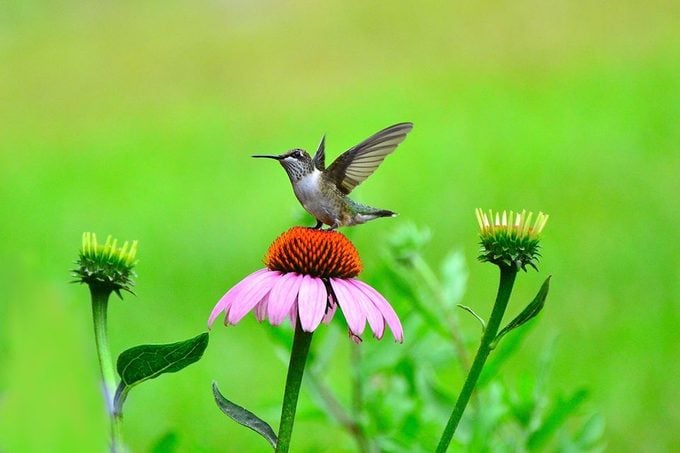
- Common name: Purple coneflower
- Botanical name: Echinacea purpurea
- Zones: 3 to 9
- Soil: Well-draining
- Light needs: Full sun to partial shade
- Size: 2 to 4 feet high
- Grown for: Long-blooming bright color that lasts from midsummer through fall
- Foliage: Basal leaves remain green in warmer climates
Daisy-like petals burst from this low-maintenance perennial that comes in a range of colors. Purple coneflower (Echinacea purpurea) is the most popular and well-known of the bunch. Coneflowers do best in plant zones 3 to 9, making them suitable for growing within most of the United States.
While it’s true that these beauties generally have a low-fuss factor, some simple care keeps coneflowers healthy and thriving. This is especially true when it comes to flashy cultivars like Tiki Torch, which sports large pumpkin orange blooms, and Double Scoop, which features duo pompon flowers.
If you have a small garden, try these dwarf coneflowers.
Do Coneflowers Prefer Sun or Shade?
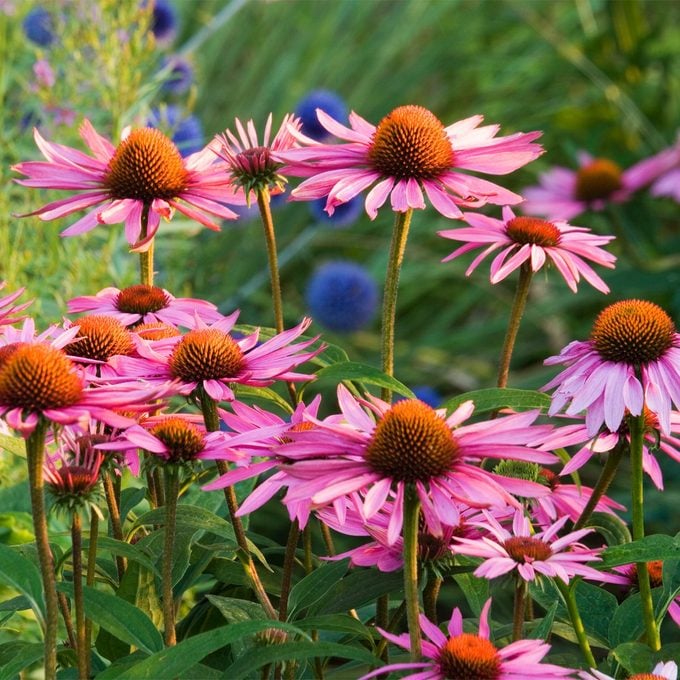
Plant pretty deer- and disease-resistant coneflower in a sunny spot. While they can handle partial shade, plant them in full sun for maximum flower power.
Deadhead to keep the blooms coming into fall and then leave the seed heads for goldfinches to feast on in winter.
Another easy-care trait of coneflowers is that they adapt to a variety of soil conditions. Loose, well-draining soil is ideal, but most coneflowers will acclimate to rocky or clay soils over time. Although coneflowers are tolerant of drought and heat, work compost into the ground around plants in early spring, water regularly through the growing season, and mulch in winter to keep plants strong and protected from common diseases like powdery mildew.
Keep your perennial coneflowers coming back year after year.
Do Deer Eat Coneflowers?
Coneflowers a known for being easy to grow, but it can be so frustrating when deer visit your backyard to feast on your perennials. Birds & Blooms reader Pete Smith of Chicago, Illinois, wrote in to ask, “Are coneflowers deer-resistant plants?”
Horticultural expert Melinda Myers says, “Coneflowers are considered deer resistant, but they are often nibbled on by rabbits. Keep in mind: As animal populations increase and food becomes scarce, they may feed upon plants they usually leave alone. Always monitor your landscape for signs of wildlife visiting and browsing on plants. Be prepared to use a variety of defenses such as repellents, scare tactics and fencing to protect key garden plants.”
How to Plant Coneflower Seeds
If planting from seed, direct sow after the danger of frost has passed. Or start seeds indoors 8 to 10 weeks before the last frost date to get a jump-start. Most coneflower seed packets come with detailed care instructions. Follow these instructions closely for the best results.
Check out the best monarch butterfly flowers you should grow.
Pollinators Love Coneflowers
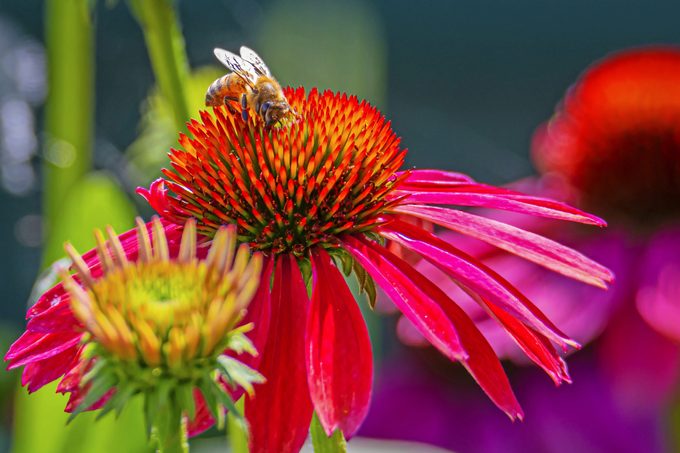
Savvy gardeners with green thumbs aren’t coneflowers’ only fans. Debbie Roos, an agriculture extension agent with the Chatham County Center of North Carolina Cooperative Extension designed and maintains a demonstration pollinator garden that includes more than 225 species of plants, 85% of them native to North Carolina. She’s seen her share of coneflower visitors.
“Coneflowers provide nectar and pollen for many species, including bees, butterflies, flower flies and beetles,” she says. “They are also important to birds. Hummingbirds enjoy the nectar and songbirds feed on the seeds from fall through winter if you leave the plants intact at the tail end of the growing season.”
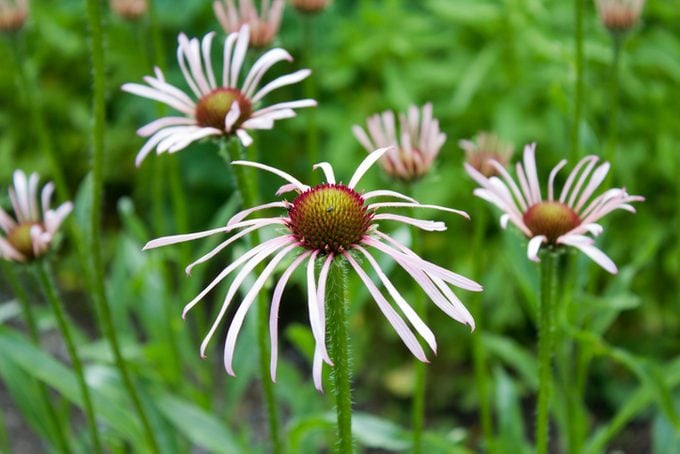
Debbie has also observed many bee species visiting coneflowers, including bumblebees, leafcutter bees, small carpenter bees, sweat bees, honeybees and others.
Coneflowers lure another beneficial flier that natural ecosystems rely on: butterflies. Debbie says these flowers attract swallowtails, monarchs, American ladies, sulphurs and more. “They’re also a host plant for silvery checkerspot butterflies,” she adds.
Purple Coneflower Companion Plants
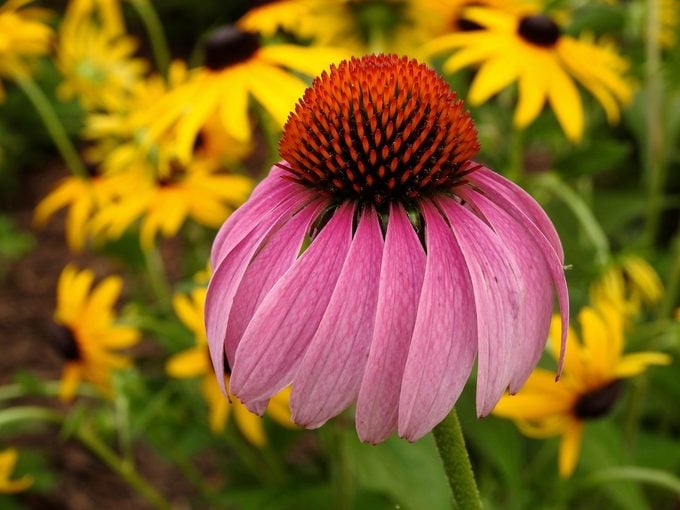
As a native plant, coneflowers thrive in naturalized areas. Purple coneflower (Echinacea purpurea) is best suited for natural environments because it tolerates dry conditions once established. Also consider the lovely native pale purple coneflower (Echinacea pallida). In these settings, grow other prairie plants that complement coneflowers, such as black-eyed Susan, ornamental grasses and yarrow.
Coneflowers’ charm and grace also make them a standout in a cottage-style garden. With blooms perched on upright stems, this old-fashioned favorite mingles well with Shasta daisies, bee balm and garden phlox. Or plant with color in mind. Purple coneflower complements the bright orange hue of butterfly weed and enhances the pastel palette of plants such as silvery lamb’s ear or pink verbena.
Grown en masse, they perform well in both borders and berms, promising endless drifts of color. Over time, they grow to create a lush look that requires only a little upkeep, such as occasional thinning. Grow coneflowers with equally assertive plant partners such as agastache or native grasses to add some diversity.
Add native plant blazing star to butterfly gardens.
5 New Coneflower Varieties to Grow
Available in more colors than ever, this garden all-star also comes in white, yellow, orange, pink and red.
1. White Swan
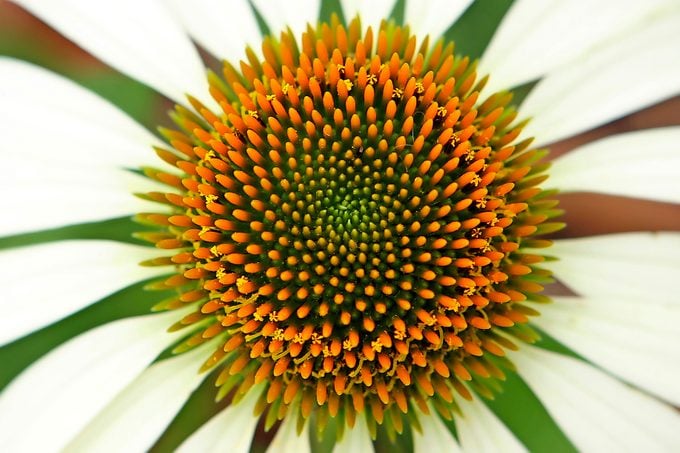
The snowy white petals of this garden classic wrap around a coppery cone. White Swan has a natural look perfect for a native plant garden.
2. Big Kahuna
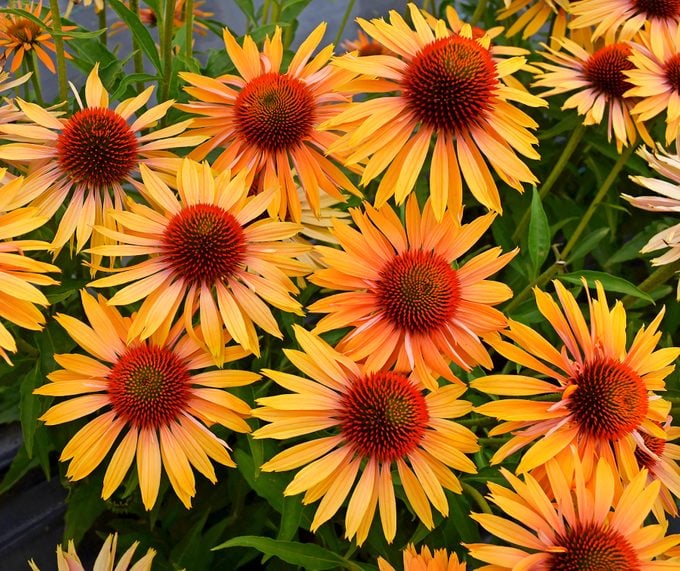
Add a tropical touch to a landscape with mango-hued blooms that boast a scent as lovely as the Hawaiian Islands.
3. Hot Papaya
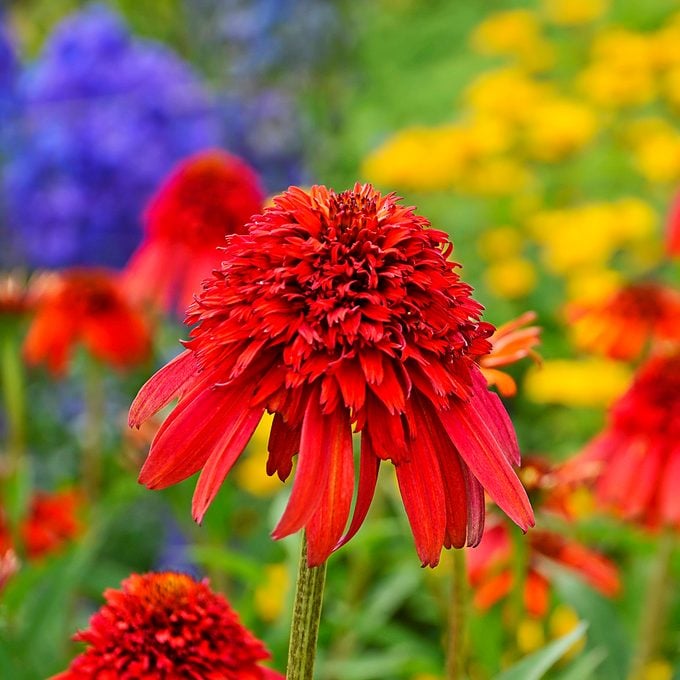
Spicy red-orange flowers with a pompom center bloom from mid-to-late summer. Hot Papaya packs a visual punch when planted in groups.
4. Double Decker

The unusual two-tiered blooms of Double Decker feature cheerful dark pink petals that make garden visitors take a second look.
5. Mellow Yellows
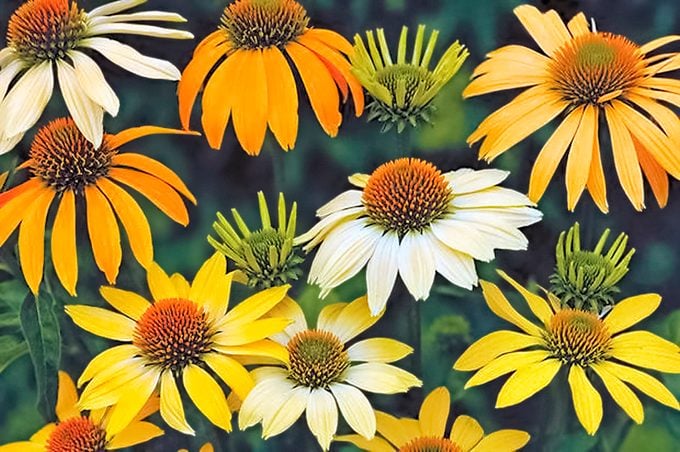
Bees and butterflies especially love the creamy, dreamy flowers on Mellow Yellows that bloom from summer into late fall, offering a long-lasting show.
Next, learn why you should plant bee balm in your pollinator garden.




















